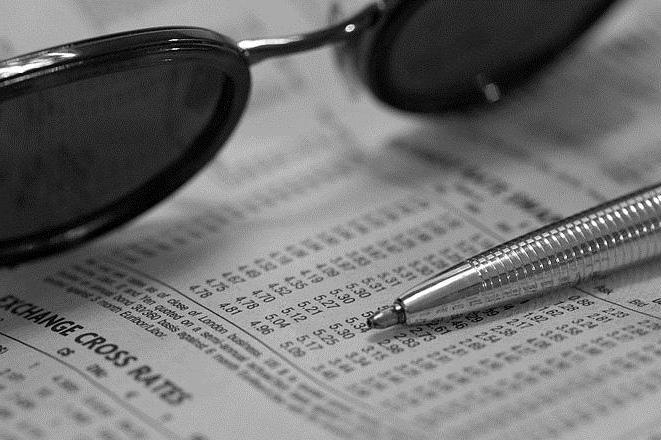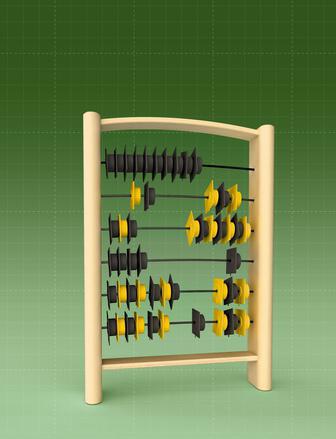The state of each country controls the amount of money in circulation. This allows you to promptly stimulate or restrain economic growth. Money supply is monitored and regulated by the Central Bank with the help of special tools. One of them is the discount rate.
Essence
Discount rate - the percentage at which commercial banks receive loans from the national. A change in this indicator affects the money supply turnover. What happens if the rate decreases? Commercial banks receive loans on more favorable terms, increase their reserves. They can issue loans to customers at a lower interest rate. That is, the supply of money in circulation increases.

The government finances the budget deficit by selling state securities. The yield on them depends on the discount rate. Its decrease affects the amount of funds raised. As a result, government spending is decreasing, and savings are increasing.
If the discount bank rate is growing, then this indicates a deterioration in the economic situation in the country. The cost of attracting resources is increasing. Bank reserves are decreasing. Commodity prices are rising, while real incomes are decreasing. As a result of a decrease in purchasing power, the demand for goods decreases and price increases slow down.
In developed countries, the bank discount rate does not exceed 1%:
- USA - 0.25% (to be revised on 10.25.15);
- Eurozone - 0.05% (10.20.15);
- Great Britain - 0.50% (11/05/15);
- Japan - 0.1% (10.30.15).
The impact of rates on the exchange rate
The connection considered earlier is not always traced. In Russia in 1998, a crisis of refinancing the budget by state central banks took shape. The discount rate has reached 150%. When the government defaulted, the ruble against the US dollar fell three times.
What happened? As a result of the crisis, there was an outflow of foreign capital, which led to an increase in net investment. Such a process stimulates an increase in demand for borrowed funds. That is, Russian citizens began to take loans in rubles, and then exchange them for dollars. Buying currency is foreign investment. As a result, the real rate has risen. There are many currency offers on the market. The exchange rate is low. This economic effect is called “capital flight”.

Kinds
Back in 2014, Russian citizens did not know about such concepts as key, accounting, and refinancing rate. But after a sharp devaluation of the Russian ruble, new terms were introduced into circulation.
According to Art. 395 of the Civil Code of the Russian Federation, the discount rate determines the price of funds to regulate the amount of liability for default. In other words, it is used in the calculation of fines, penalties and other penalties. Its size is regulated by the CBR.
Over time, the refinancing discount rate began to apply to tax and other legal relations. By 2013, it became an indicator of the socio-economic development of the country, displaying a minimum fee for using credit resources.
As a result, the Central Bank introduced a new term - “key rate”, which determined the market price of money. But at the end of 2014, the gap between these two indicators was very large. While the Central Bank dictated a “social” refinancing rate of 8.25%, the key one was 17%. As a result, participants in monetary relations tried to recover a higher percentage of liabilities. In 2015, the Central Bank has already reduced the market rate from 15% to 11%. But the gap still exists.
Key rate dynamics
This indicator affects:
- the cost of attracting resources by commercial banks;
- interest rates on loans, deposits;
- inflation rate;
- economic development of the country as a whole.
From July 31, 15, the key rate is 11%. The most serious change was in December 2014.During the day, the rate increased from 10.5 to 17%. As a result, banks began to attract deposits at 20%, and the cost of loans increased sharply.

| Periods | Range |
| 08/03/15 - today | 11% |
| 16.12.15 – 02.08.15 | From 17% to 11.5% |
| 13.09.13 – 15.12.14 | From 5.5% to 10.5% |
Discounting
People face the process of increasing money every time they make a deposit or take a loan. It is also called the decursive method:
F = I / P = (S - P) / P, where
I is the amount of interest.
S is the future value.
P is the initial cost.
The financial institutions calculate the effectiveness of a particular operation by discounting - reducing the future value of cash flows to date.
d = D / P = (S - P) / S, where
D is the discount.
S is the future value.
P is the initial cost.
Although the formulas are similar in appearance, their economic meaning is different. In the first case, there is a “margin” of value, and in the second, a “discount” from its value. Discount rates are most often used in the discounting process. Less commonly, they are used in building. In the second case, they talk about antisipative percentages. If simple discount rates are used, then changes occur in arithmetic progression, and if complex - in geometric.

Example
A loan in the amount of 1,000 thousand rubles. issued for a period of 6 months (0.5 years) at 30%. We determine the future value of money in two different ways:
- decursive: F = P * (1 + n * i);
- antisipative: F = P * (1 / (1 - n * d)), where
n is the duration of the loan;
I - interest rate;
d is the discount rate.
1) F = P * (1 + n * i) = 1000 * (1 + 0.5 * 0.3) = 1150 thousand rubles.
2) F = P * (1 / (1 - n * d)) = 1000 * (1 / (1 - 0.5 * 0.3)) = 1176 thousand rubles.
Growth at the discount rate always occurs at a faster pace. Banks often use it to issue loans in times of high inflation.

Accrual frequency
Typically, financial institutions set annual rates. If we are talking about simple percentages, then the frequency of the increase does not matter, since the increase process occurs in arithmetic progression. But the length of the loan term (n) is not always a multiple of a whole year. Simple interest is used for short-term transactions. Especially for such cases, a modified formula for calculating future value is used:
- discursive interest: F = P * (1 + (t / K) * i));
- antisipative percentages: F = P * (1 / (1 - (t / K) * d)), where
t is the number of days of using the loan;
K - the number of days per year (365 or 366).
Capitalization
Complicated discount rates take into account the reinvestment process, since the increase in value is carried out exponentially. For long-term investments, the use of this method is more preferable. The owner has the opportunity at any time to invest in order to generate income. The formula for calculating antisipative interest is as follows:
F = P * (1 / (1 – d) ^ n) = P * (1 / (1 - d) ^ (t / K)).
Over the long term, the refinancing process, that is, the accrual of “interest on interest” is more pronounced. Therefore, the duration of the operation in days is measured extremely rarely. Usually the number of years is expressed as a fractional number in months (4/12 or 8/12). For clearer calculations, a mixed accrual order form is used. Interest is first accrued on an integer number of years, and then on a fractional:
F = P * (1 + i) ^ n) * (1 + (t / K) * i).

Example. Credit in the amount of 3000 thousand rubles. issued January 1, 2013 to September 30, 2015 at 28% per annum. The most commonly used standard formula is:
F = 3000 * (1 + 0.28) ^ (2 + 9/12) = 5915 thousand rubles, where
2 - an integer number of years;
9/12 - the period from January to September 2015.
If you use the mixed method, the formula will look like this:
F = 3000 * (1 + 0.28) ^ 2 * (1 + 272/365 * 0.28) = 5937 thousand rubles.
The difference in the calculations is 22 thousand rubles.








